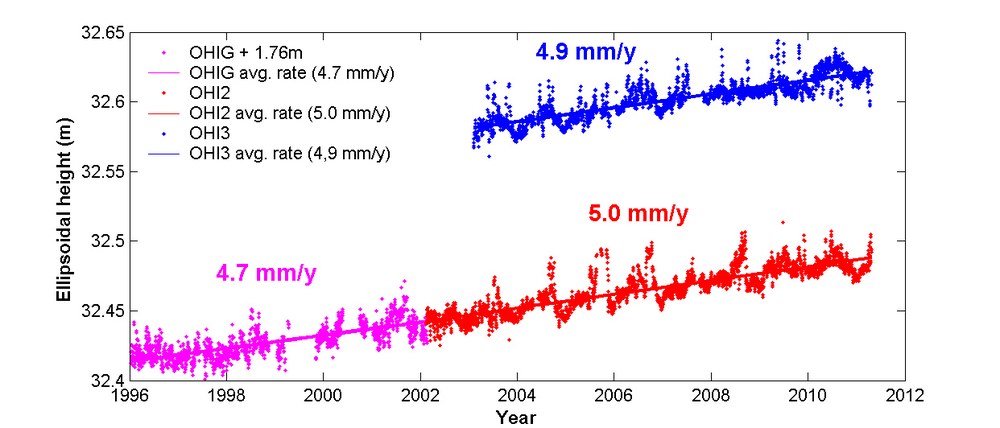Crustal movement on the Antarctic Peninsula
Estimating the rate at which Antarctic ice masses are melting as a result of global warming is an important element in predicting sea water rise. Changes in mass can be precisely determined today with the help of gravity-field-measuring satellites like GRACE. Since gravity field changes can be related to vertical movement of the earth’s crust, reliable measurement of crustal uplift is an important basis for ascertaining ice loss.
All the geodetic techniques at O'Higgins reveal the same trend: the spatial approaches using VLBI and GNSS show uplift of ca. 5 mm per year, and two local measurements of absolute gravity in 1997 and 2011 show a decrease of 16.7 microgal, an amount compatible with the crustal uplift.
Especially the GNSS data reveal the value of long-term measurements. Although continuous uplift has taken place since 1998, no significant rise was detected for the previous years. The cause of the uplift could be an elastic reaction of the crust to a significant reduction in its ice load. Sudden loss of ice can, for example, result from accelerated glacier movement toward a coast caused by the disintegration of an ice shelf.

